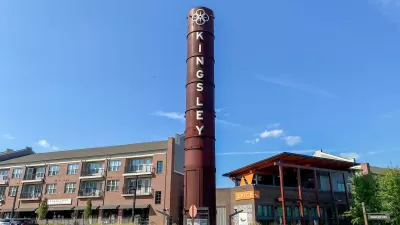Richard Florida takes a look at a new report that traces the affordability crisis to cities' inability to densify their older, inner suburbs.

We hear a lot about how restrictive land use regulations and the efforts of NIMBYs hold back new housing in central areas. But according to Richard Florida, density advocates may want to widen their focus.
Parsing a report by urban housing economist Issi Romem, Florida writes that many urban cores are developing and densifying. "Romem argues that America's real housing problem—and a big part of the solution to it—lie in closer-in single-family-home neighborhoods that were built up during the great suburban boom of the last century, and that have seen little or no new housing construction since they were initially developed."
Using Los Angeles as a case study, Romem goes through how American cities became seas of single-family housing. Florida argues that easing restrictive zoning rules in inner suburbs "would spread population growth more equitably and sustainably across a metro, relieving the pressure of rising housing prices and gentrification around the urban core, and unsustainable growth at the periphery."
"'The dormant suburban sea is so vast that if the taboo on densification there were broken,' Romem writes, 'even modest gradual redevelopment—tearing down one single-family home at a time and replacing it with a duplex or a small apartment building—could grow the housing stock immensely.'"
FULL STORY: Density's Next Frontier: The Suburbs

Study: Maui’s Plan to Convert Vacation Rentals to Long-Term Housing Could Cause Nearly $1 Billion Economic Loss
The plan would reduce visitor accommodation by 25,% resulting in 1,900 jobs lost.

North Texas Transit Leaders Tout Benefits of TOD for Growing Region
At a summit focused on transit-oriented development, policymakers discussed how North Texas’ expanded light rail system can serve as a tool for economic growth.

Why Should We Subsidize Public Transportation?
Many public transit agencies face financial stress due to rising costs, declining fare revenue, and declining subsidies. Transit advocates must provide a strong business case for increasing public transit funding.

How to Make US Trains Faster
Changes to boarding platforms and a switch to electric trains could improve U.S. passenger rail service without the added cost of high-speed rail.

Columbia’s Revitalized ‘Loop’ Is a Hub for Local Entrepreneurs
A focus on small businesses is helping a commercial corridor in Columbia, Missouri thrive.

Invasive Insect Threatens Minnesota’s Ash Forests
The Emerald Ash Borer is a rapidly spreading invasive pest threatening Minnesota’s ash trees, and homeowners are encouraged to plant diverse replacement species, avoid moving ash firewood, and monitor for signs of infestation.
Urban Design for Planners 1: Software Tools
This six-course series explores essential urban design concepts using open source software and equips planners with the tools they need to participate fully in the urban design process.
Planning for Universal Design
Learn the tools for implementing Universal Design in planning regulations.
City of Santa Clarita
Ascent Environmental
Institute for Housing and Urban Development Studies (IHS)
City of Grandview
Harvard GSD Executive Education
Toledo-Lucas County Plan Commissions
Salt Lake City
NYU Wagner Graduate School of Public Service





























